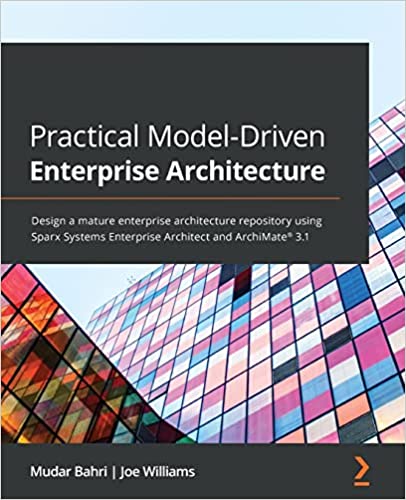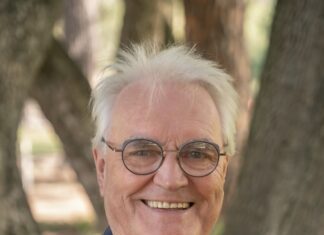Mudar Bahri is the author of Practical Model-Driven Enterprise Architecture; we got the chance to sit down with him and find out more about his experience of writing with Packt.
Q: What are your specialist tech areas?
Mudar: Enterprise Architecture Implementation.
Q: How did you become an author for Packt? Tell us about your journey. What was your motivation for writing this book?
Mudar: I always wanted to write a book on EA and I tried multiple times to put an outline but whenever I get distracted I put that on hold for few months and sometimes longer. Until I knew that my brother Tameem Bahri wrote a book on Salesforce, and that was a great motivator for me. I asked him to put me in contact with the publisher because I have an idea that I can write a book on. He put me in contact with Packt and my writing experience began from that date.
Q: What kind of research did you do, and how long did you spend researching before beginning the book?
Mudar: The idea of the book was in my head for at least 5 years. When Packt asked me to provide a book outline, I needed to make sure that the book will cover a perspective that no other book did. Most books on enterprise architecture are theoretical and they talk about the concept of EA and why it is important, and how organizations can benefit from it, but I could not find a book that talks about how to build EA artifacts. I’m writing this book to my younger self, when I was struggling to connect the EA theory to a practical implementation.
Q: Did you face any challenges during the writing process? How did you overcome them?
Mudar: The biggest challenge was the time. I have a full-time job, and I’m a single father with shared custody. It was almost impossible to focus on writing when the kids were around, which means that my originally planned schedule cannot be met. When I realized that I will definitely miss the deadline, I decided to ask for help, and who would be better than my previous mentor and coworker Joe Williams, and this is how he joined the effort and we both were able to finish on time.
Q: What’s your take on the technologies discussed in the book? Where do you see these technologies heading in the future?
Mudar: Enterprise Architecture was a big trend and I feel that it lost some momentum nowadays because many organizations spent years of expensive investments without an equivalent return. However, I feel that this is the best time for this book to be launched, because organizations that still believe in EA are those that want to implement it for its benefits and not just to follow a hot trend.
Q: Why should readers choose this book over others already on the market? How would you differentiate your book from its competition?
Mudar: There are many books about EA frameworks, but very few about how to make use out of EA and how to connect the dots between the components of the enterprise. This book will teach how to follow the standard but without overwhelming the reader with the constraints of the standards.
Q: What are the key takeaways you want readers to come away with from the book?
Mudar: The book will teach you how to plant the seeds of EA in your organization, and it is your responsibility to plant these seeds and grow them.
Q. What advice would you give to readers learning tech? Do you have any top tips?
Mudar: The advice that I keep repeating is do not compromise the quality of your diagrams at any time and at any cost. Building an EA repository can cost your organization hundreds of thousands of dollars, so make the ones who invested in you feel proud that they did.
Q. Do you have a blog that readers can follow?
Mudar: Unfortunately no, but maybe it is time to start blogging, and this will be another new experience for me.
Q. Can you share any blogs, websites and forums to help readers gain a holistic view of the tech they are learning?
Mudar: Nothing on top of my head now, but I always have the content of TOGAF and ArchiMate bookmarked in my browser as I find these are the most valuable references at any time.
Q. How would you describe your author journey with Packt? Would you recommend Packt to aspiring authors?
Mudar: Absolutely amazing! This was my first book and since English is my second language, I was worried that it might be a big obstacle, but Packt had dedicated a team of editors, technical reviewers, and a project manager to make sure that we all can deliver a high quality product.
Q. Do you belong to any tech community groups?
Mudar: No but I welcome any recommendations on EA community groups that focus more on delivering value than debating terminologies.
Q. What are your favorite tech journals? How do you keep yourself up to date on tech?
Mudar: I prefer short focused articles over the long articles that can be found in journals. I’m not saying that it is better, but a preference to me.
Q. How did you organize, plan, and prioritize your work and write the book?
Mudar: That was the biggest challenge I faced while writing the book. First chapter was delivered on time, but while writing the second chapter I started to receive some editor’s comment on the first, so I had to work on two chapter at the same time. This overlapping of the chapters was the biggest thing that caused the schedule to start slipping. I had to say no to many social activities, and I had to stop doing many things that I used to love doing such as hiking and gardening because I was always out of time. It take a lot of commitment to write a book, no doubt about that.
Q. What is that one writing tip that you found most crucial and would like to share with aspiring authors?
Mudar: Try the writing experience, and you will feel how more professional it will make you.









